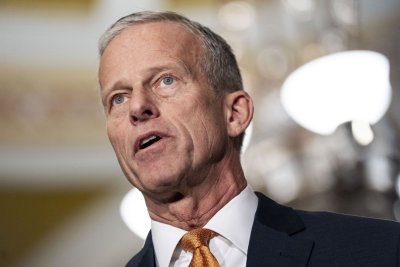**Federal Government Shutdown Could Cost U.S. Economy Up to $14 Billion, CBO Estimates**
*Oct. 29 (UPI)* — The longer the federal government shutdown persists, the greater the economic impact on the U.S., with the Congressional Budget Office (CBO) estimating costs could reach up to $14 billion.
The current CBO estimate, released Wednesday, indicates that if the shutdown ends this week after four weeks, the economy will have lost $7 billion in activity. However, if the shutdown continues for 11 weeks, the estimated cost rises to $11 billion, and it could top $14 billion if it lasts eight weeks, according to CNBC. The economic toll would increase further should the shutdown persist beyond the end of November.
Senate Majority Leader John Thune (R-S.D.) has indicated that Senate Democrats may be more willing to end the shutdown. So far, the Senate has failed 13 times to approve a continuing resolution to fund the government through Nov. 21 as they negotiate a bipartisan budget for fiscal year 2026.
A recent Senate vote on a clean continuing resolution failed on Tuesday with a 54-45 vote, with one GOP senator abstaining. Without government funding by Nov. 1, families relying on the federal Supplemental Nutrition Assistance Program (SNAP) could lose access to food stamps.
In response, the Trump administration is exploring ways to pay military personnel, while several airlines have started feeding air traffic controllers and other essential staff who are working without pay during the shutdown. Once the government reopens and funding is restored, federal workers will receive back pay.
Currently, Republicans hold a slim Senate majority with 53 seats versus 47 for Democrats, including two independents who caucus with the Democrats. However, Senate rules require 60 votes to pass spending legislation, meaning Republicans need support from at least five Senate Democrats, along with three other caucus members, to pass the continuing resolution and reopen the government.
While most Senate Republicans have voted to fund the government, the majority of Senate Democrats have opposed the House-approved continuing resolution. Senators John Fetterman (D-Pa.) and Catherine Cortez Masto (D-Nev.) are two Democrats who have consistently supported government funding, alongside independent Sen. Angus King (I-Maine), who caucuses with the Democrats. Conversely, Sen. Rand Paul (R-Ky.) is the lone GOP senator consistently opposing the continuing resolution.
The continuing resolution would extend the 2025 fiscal year budget, allowing more time to finalize a bipartisan budget for fiscal year 2026. The new fiscal year began on Oct. 1, but the absence of an interim funding bill has shut down the federal government for the past four weeks, with no resolution in sight due to the Senate deadlock.
Key issues causing the impasse include Senate Democrats’ demands to extend tax credits for the Affordable Care Act (ACA), initially introduced as temporary measures during the COVID-19 pandemic and set to expire at year’s end. Democrats also seek to expand Medicaid access, a proposal that GOP lawmakers oppose, arguing it would allow states to provide taxpayer-funded healthcare to undocumented residents—a claim Democrats deny.
The estimated cost for extending ACA tax credits and expanding Medicaid access stands at $1.5 trillion over the next decade. Republicans criticize the inclusion of these provisions in a temporary funding measure as excessive and maintain that such policies should be addressed in the final budget bill rather than through the continuing resolution.
As negotiations continue, the economic consequences of the ongoing shutdown underscore the urgency of reaching a bipartisan agreement to fund the federal government and reopen its operations.
https://www.upi.com/Top_News/US/2025/10/29/shutdown-cost/9511761778976/

